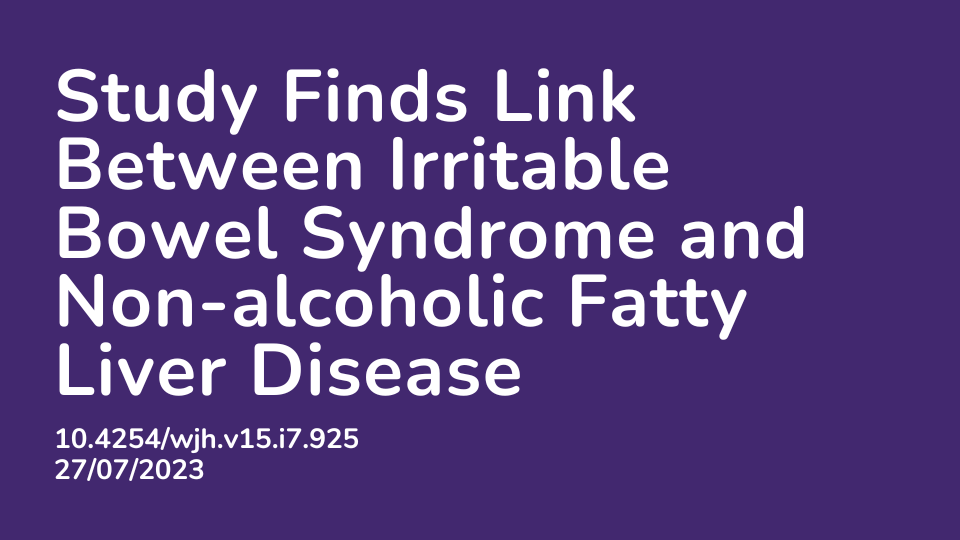Summary:
Non-alcoholic fatty liver disease (NAFLD), affecting up to 25-30% of the global population and even more so in individuals with obesity, poses substantial health risks. Irritable bowel syndrome (IBS) is a common digestive disorder characterized by abdominal pain and inconsistent stool movements. While the global prevalence of IBS remains uncertain, it has been noted to have shared underlying pathophysiological connections with NAFLD, driven by factors like insulin resistance, inflammation, and gut-brain interactions. This systematic review aimed to assess the association between IBS and NAFLD, exploring common mechanisms and risk factors. The individuals included in the study that had both IBS and NAFLD had a higher rate of metabolic risk factors including obesity, hypertension and diabetes. The review revealed that IBS was more prevalent among NAFLD patients compared to those without NAFLD. Additionally, two studies demonstrated a significant correlation between the severity of IBS and NAFLD, with IBS severity increasing with NAFLD severity. In conclusion, this paper explained that there may be shared pathways between IBS and NAFLD, which can offer insights for the development of future treatment options.
Abstract:
BACKGROUND: Irritable bowel syndrome (IBS) is associated with obesity and metabolic syndrome. IBS and non-alcoholic fatty liver disease (NAFLD) are highly prevalent entities worldwide and may share similar mechanisms including gut dysbiosis, impaired intestinal mucosal barrier and immune system activation. AIM: To systematically review their association according to the Preferred Reporting Items for Systemic Review and Meta-analyses guidelines. METHODS: PubMed, EMBASE and Cochrane Database of Systematic Reviews were searched for relevant papers. Manual searches were also performed. RESULTS: Six studies were included. Both IBS and NAFLD subjects had significantly more metabolic risk factors like hypertension, obesity, dyslipidaemia and diabetes. Our review showed that 23.2% to 29.4% of NAFLD patients had IBS. IBS was significantly higher in NAFLD patients compared with patients without NAFLD (23.2% vs 12.5%, P < 0.01). A higher proportion of IBS patients had NAFLD (65.8% to 74.0%). IBS patients were three times more likely to have NAFLD compared with non-IBS patients (P < 0.001). Two studies showed a significant correlation between the severity of IBS and NAFLD. The proportion of NAFLD subjects with IBS increased with NAFLD severity. CONCLUSION: Further prospective studies are warranted to evaluate the relationship and shared pathways between IBS and NAFLD, potentially leading to the development of future therapeutics.
Article Publication Date: 27/07/2023
DOI: 10.4254/wjh.v15.i7.925



